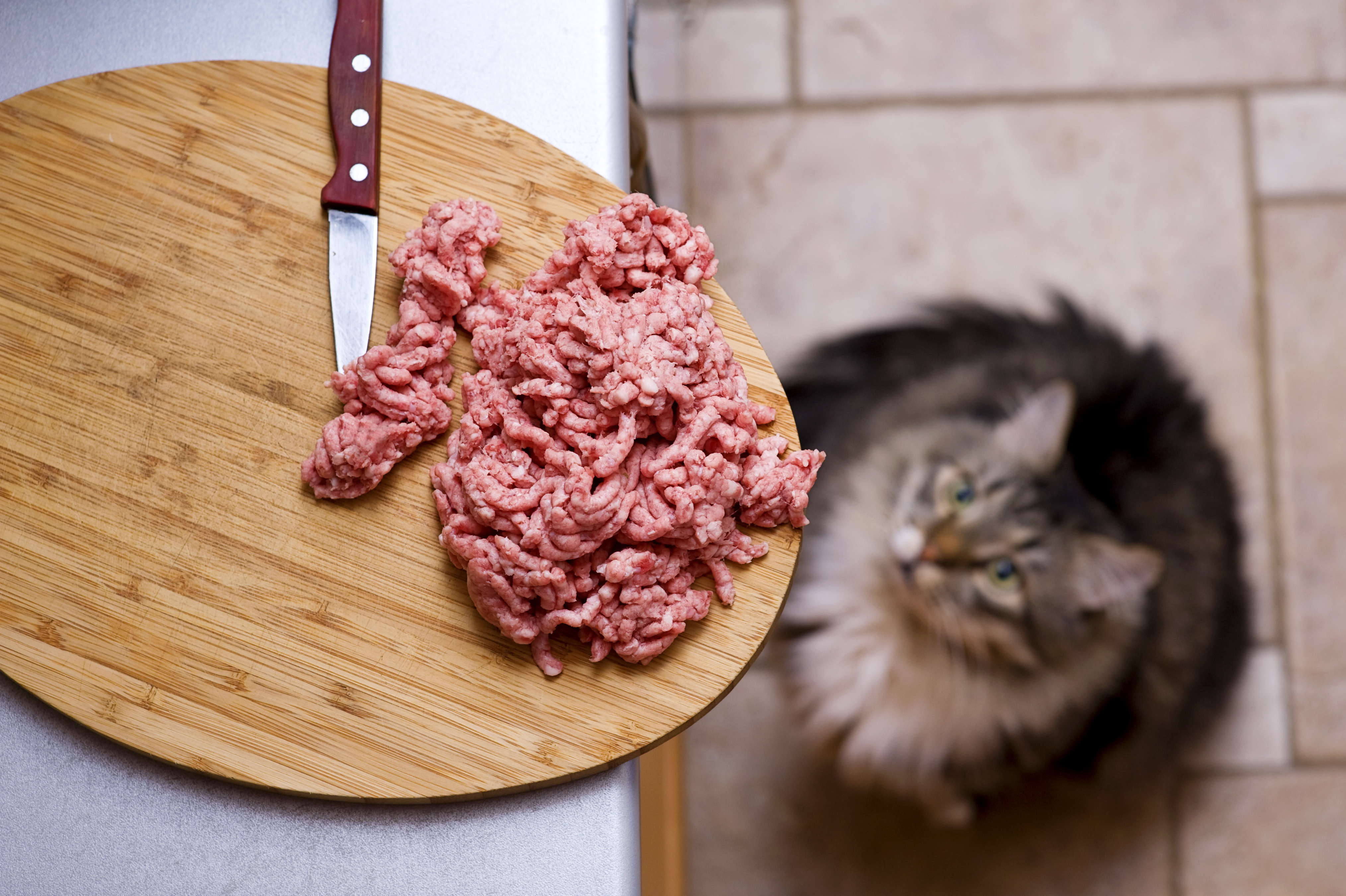Q. Dear Umbra,
I’m a vegan for primarily environmental reasons, but I know most evidence says my cat needs to eat meat. What are the most environmentally responsible wet and dry cat foods I can buy? Bonus points for minimizing the suffering of the animals she’s eating (e.g., wild-caught better than factory-farmed).
Rachel Z.
Boulder, CO
A. Dearest Rachel,
True story: Back in my salad days, I had a roommate who worked as a lab technician. Instead of commercial kibble, her cat dined on raw mice, euthanized test subjects she brought home from the office. I suppose one could argue this diet helped reduce waste (the mice would have otherwise been thrown away after their service to science was done), but I don’t think it gets too many points for minimizing suffering and I can’t tell you how nutritionally balanced it was. What I can say is that cat was the most aggressive, unpleasant feline I’ve ever had the misfortune to meet. Coincidence, or learned bloodlust?
I’m sure your kitty companion, on the other hand, is delightful, Rachel. And I think it’s wonderful that you’d like to extend your sustainable values to her food dish. Though the matter remains somewhat controversial, you’re right that most vets discourage vegan or vegetarian diets for cats: The little furballs are obligate carnivores, needing certain vitamins and nutrients that can only be found naturally in the animal kingdom. Your cat, left to her own devices, would feast on rodents, birds, and perhaps the occasional frog, so a veggie-based diet fortified with synthetic nutrients might pose some nutritional problems.
Still, that leaves us with the carnivore’s dilemma: If a cat must eat meat, which meat is best? This question gets complicated quickly. Almost all cat food brands contain animal proteins, but the precise kinds of animals, and in what amounts, can be frustratingly difficult to determine — tasty-sounding flavors like Beef Liver Supreme or Lobster ‘n’ Caviar for Cats notwithstanding. Reading the labels carefully helps (head over here to learn the difference between Chicken Cat Food and Chicken Dinner), but in doing so you’ll probably run into some kind of “meat meal” or “meat byproducts” on the ingredient list. And this — brace yourself — is a mix of slaughterhouse leftovers (everything from organs to bones to brains), plus sometimes other dead animals from shelters and zoos, rendered into an indistinguishable slurry. Not exactly appetizing, I know, even for creatures that lick their own behinds.
But before you run out in search of some whole-food lab mice of your own, Rachel, consider this argument: These meat byproducts come from animal parts that human meat-eaters don’t consume. If we didn’t feed the offal to our pets, much of those leftovers would go to waste, and we’d need to raise a lot more resource-intensive, human-food-grade meats to feed America’s 163 million pets. Then again, much of these “meat meal” ingredients are byproducts of conventional factory farming, something you’ve chosen not to support in your own life. Are you OK with feeding your kitty the existing leftovers anyway? You’ll have to make that call yourself.
If any sort of factory-farmed ingredients are a no-go, you’ll have to shop carefully. There are some boutique brands out there touting free-range, grain-free, byproduct-less kibbles and canned foods (I haven’t sampled any myself, but you might check out this and this). They’re pricier than the regular stuff and may be hard to find, but I’m willing to bet someone in Boulder carries them. And with fish-based cat food in particular, you can seek out Marine Stewardship Council-certified brands that use only sustainably caught swimmers. If you’re really devoted to your little purr machine’s diet, you can even make your own food from whatever high-quality ingredients you deem worthy — but please, talk to your vet before you try whipping up your own wild-caught Salmon Surprise. As we’ve already discussed, Fifi has very specific nutritional needs.
If you’re OK with some form of mystery meat — or you lack the time, funds, or inclination to grind your own chicken necks — you can still shop for better options in the pet food aisle. Organic pet food is a good idea, for all the same reasons organic people food is a good idea: reduced use of pesticides, hormones, and greater freedom for livestock. (Note: The term “organic” is a bit murky when it comes to pet food because the organization that oversees cat and dog chow can’t test for compliance; call the company and ask questions if you’re confused.)
Eating lower on the food chain is also a smart move: Raising poultry and fish produces much less carbon than beef or lamb, so foods that primarily contain these ingredients are a better pick than that Beef Liver Supreme. And if you’re lucky enough to find a locally produced brand (surprise, you have one), you also get to reduce food miles and support a neighborhood business.
I hope some combination of the above suggestions will work for you, Rachel. If your cat is anything like other felines I’ve known, she’s waking you up before dawn for a feeding — so you might as well feel good about it as you stumble to her food dish.
Finickily,
Umbra



